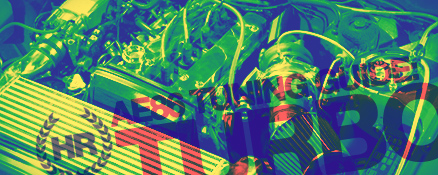
So you like boost now? Got a taste for it with the 4A-GZE and now you want more? Well the next logical step is to bolt on a turbo!
INTERNAL FORTITUDE
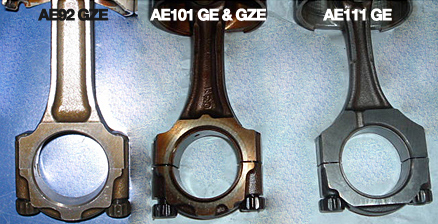
When coupled with a turbo, the internal strength of a 4A-GZE bottom really comes into its own. Toyota really over-engineered the GZE bottom end, and only decided to run with a mild amount of boost with a super charger to play it safe. A turbo on the other hand crams a lot more boost into the combustion chamber thus making good use of Toyota forethought.
It has been widely speculated how much boost a GZE can cope with, from forums and internet chatter claiming anywhere from a lowly 8psi (a.k.a half a bar) all the way up to a engine busting 30psi (2 bar)!!
As mentioned last instalment of the AE86 Tuning Guide, a factory GZE has about 6-8psi of boost from the ‘charger. If you add a turbo you obviously going to be running a larger amount of boost. This is where you will need to restrain yourself and keep boost levels to a sane amount, everyone wants to immediately cram 30psi into the engine and enjoy the fun, without thinking of the consequences (a.k.a BANG!)
If you keep things below a maximum of 15psi your newly named 4A-GTE will enjoy a long and happy life with its standard rods and pistons.
Now not all rods and pistons are created equal. The Bigport, while still built like the proverbial brick out-house, was well and good but suffered from a selection of weak points. Toyota again went nuts in the over-engineering department and created the Smallport AE92 4A-GZE with nigh on indestructibility as their goal. The largest and strongest factory rods, forged pistons, larger wrist pins, and best oil squirters would only make it into this engineering marvel.
If your going to build your self a 4A-GTE, a Smallport GZE bottom end is probably the best place to start. While the Bigport has proven itself, the small port is just that much better again.
If you want to do it on the cheap you can do so by bolting a manifold, turbo, ECU, intercooler on and away you go. The problem with this is that quite often you don’t know the condition of the bottom end and without taking off the head you will never know. If you just slap it together on the cheap it may last 10 years on the limiter, or it may last 10 minutes on a test drive round the block… Wanna take that chance?
IF you answered no now is the time to check your bottom end. If you find some of your pistons are now merely ornamental (IE fubar’d, fried, cooked, etc) you can still get a new set of GZE pist0ns fresh from Toyota. But before you rush off to pay Toyota Genuine Parts more rediculous money, check out the competition. Nowadays there are many piston manufacturers out there who all offer a range of off the shelf, forged, low compression pistons for the 4AGE/ZE. Also on offer are a range of aftermarket rods as well, but since Toyota offer such excellent conrods to begin with, it’s rare to need to replace those with aftermarket items.
Best thing with low comp 4A-GE pistons is that if you use a 20v head, it still not a problem! 4AGE’s are a non-interference engine and you wont end up bending valves either way you go about it.
A good mate of mine has a 20v turbo in his AE86. It uses aftermarket 16v pistons on the Smallport GZE bottom end and revs to 9000rpm quite easily, and cops a 20psi gob full each time!
Another good mate has a smallport GZE turbo bottom end for his turbo FWD AE92, with aftermarket pistons and on a good night (IE very cool night) has seen 25psi and cops a thrashing day in, day out, on the track, winding road, trundling to work… You name it, he’s done it.
HEAD CASE
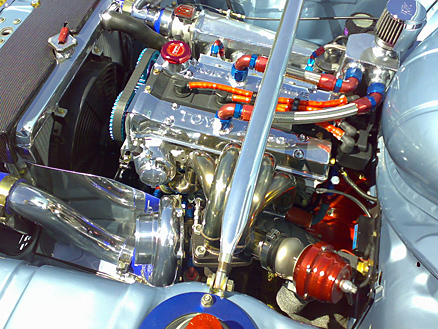
So now that you’ve got your bottom end sorted, which head do you use? This is where, unfortunately for 16 Valve users, the Smallport head is kind out of its depth. No amount of porting or polishing to the smallport head, will match the flow rate or intake design of the Bigport.
Armed with a 16v Bigport head, all that really needs to be done to aid in its flow of boost, is clean up the dags and casting marks, remove the pesky TVIS plate and bolt the intake manifold back on! Due the physically larger size of the intake ports on the Bigport head it allows more force fed air to be crammed in, where as the Smallport cannot keep up the volume.
Upgrading the throttle body on the 16v head is also going to be one of the best things to be done. You can use a 3S-GTE throttle body from a Turbo SW20 MR2 or if you’re crazy enough a Ford XF Falcon (a common Aussie model for you International readers) throttle body, which from memory is a huge 75mm!!
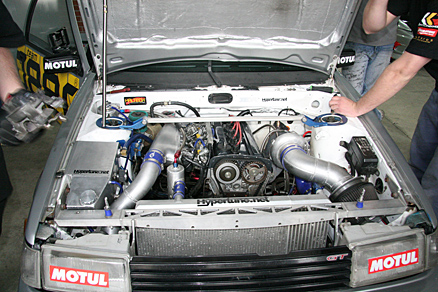
On the other hand, a 20 valve head with its individual throttle bodies are better again. They allow for a much more controlled air flow into the conbustion chamber and work extremely well under boosted applications (RB26DETT anyone?)
The biggest issue with individual throttle bodies or ITB’s is having a manifold to contain the air evenly across all 4 throttles. A large chamber of about 2 liters designed to sit over the top of the throttles is usually the best. It doesn’t have to be anything fancy, just sealed. So make sure its air tight and no spikes or ridges to impede air flow and you’re right to go.
Having said that, there is a something to be said about a well designed intake manifold. Have a look at the RB26 factory manifold, and also a nissan pulsar GTi-R SR20 intake manifold. Both of those taper at the ends to force air into the last throttle body, this is a good design philosophy to keep in mind if you decide to follow this path and make a custom manifold.
As you no doubt aware, the 20v head have individual throttle bodies from the factory plus of course the 5 valves per cylinder. This extra valve is probably the greatest thing for any turbo engine. It has been proven time and time again that the 20v head flows so much more than the 16v head ever will, both with forced induction and in N/A applications.
It is quite possible to add 20-50rwkw simlpy by using a 20v head instead of a 16v head. Although you fuel system would need to be up to it though… but ill get to that in a moment.
THE GREAT DEBATE: EXHAUST MANIFOLDS
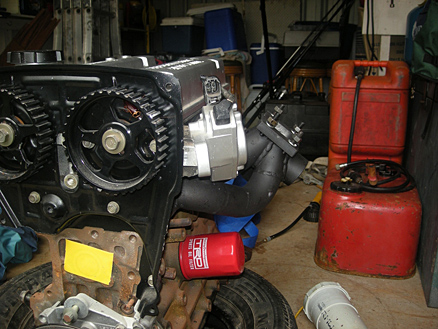
Now this is the most debated subject in the history of forced induction ever. Exhaust manifolds..
A decent exhaust manifold can make or break an engine. This is where the power and boost is really made before being given to your beautifully manicured engine.
There is no hard and fast rule to the design of the exhaust manifolds, no need to be fully tuned length or any fancy unobtainium metals. A simple steampipe log style manifold quite often is all you will need. While a log style manifold may be scoffed at being crude and uncooth, quite often a simple smooth flow path of a log style manifold has provided more flow than a fancy name brand titanium manifold.
If space is at a premium you dont need a 100 bends in your exhaust manifold either to make it work instead of a log style manifold. a simple set up of bends that provide a smooth path to the turbo is all that is needed. doesnt need to be equal length or tuned length, it just needs to allow the exhaust gases to move freely and smoothly. Smooth bends less than 90° degrees are the best way keep up the flow.
Again when making a manifold, simple is best. You dont need any unobtainium or titanium or stainless steel to make a good manifold. Recently a good mate had a brand new stainless manifold on his RB26, purchased off a reputable company, with warranty. Quality was assured, but after 2 weeks it cracked and was leaking. Took it back they fixed it, under warranty, 1 week later it cracked again in another place, and soon after that the original crack opened up again. He had it fixed by somewhere else, they looked at it and said its going to crack again as it was no strong enough to handle the heat cycling.
Sure enough it cracked again. And was quickly replaced by an ugly looking, but damn near indestructable steampipe manifold. After many drift days it hasnt skipped a beat and cops a flogging.
CHOOSING WISELY
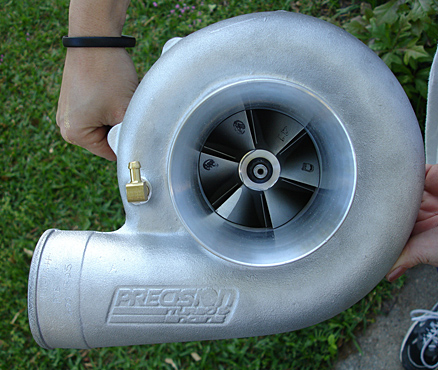
Turbo selection is one of the hardest parts of any turbo vehicle when upgrading.
Starting with the cheapest, there are a number of factory turbo’s which work better than the original manufacturer and vehicle ever intended to when you attach them to a 4A-GTE.
Most commonly used is the T25. Found on all CA18 and SR20 S13 Silvia’s and early skylines, they are a bush bearing, rebuild-able and most importantly DIRT CHEAP!! By using a common T3 flange they are guaranteed to be everywhere.
Second most common is the T28. Found on all RB25’s and S14 onwards Silvia’s. Again the early ones have a bush bearing and are little bit bigger than the T25 turbo. Being a bit bigger means that its slightly laggier, but it will be barely noticeable compared with the T25 when properly set up.
The S15 an RB25 neo engines came with a T28 also, but instead of that bush bearing they came equipped with a ball bearing. These are less common and much much better than the bush bearing T28. They have a faster spool rate, and again they are rebuild-able. However, they are not cheap, and are a little laggy when using anything less than 10psi. These turbos are fantastic with 20v engines, where they can utilise the higher airflow of the 20v head.
The T04L turbo found on WRX’s are in my humble opinion probably the second best factory turbo’s overall you could ever use on a turbo 4AG engine. Slight down side is it uses a VF type flange which is less common but no more difficult to find something to fit. Its a bush bearing again, and also cheap. I mean how many WRX’s are out there?!? They are roughly the same physical size as a T25, but use a slightly smaller front housing allowing it come on boost on real fast and real strong!
A very good friend of mine uses this turbo on his AE92 seca, and at 22psi at 2500rpm makes it very difficult to do hill starts without alerting the attention of any nearby policemen. His car with this turbo makes a healthly 165fwkw and boost starting at 1500rpm and holds it all the way to redline! Proven and well worth it!
Probably the best factory turbo in my opinion would be the VF34 from a subaru WRX STI. It is a bit bigger than the T04L, and like the T28 this turbo is ball bearing. Like its T04L brother it also uses a VF flange but it’s design and size make it damn near perfect for any 4A-GTE engine.
Using a slightly smaller rear compressor housing than the T28, a slightly larger front compressor wheel and a similar sized front housing than the T25, this turbo starts making boost around 2000rpm and full boost coming on before 3000rpm!! A 4A-GTE attached to this turbo with a decent set up will see around 180RWkW.
The downside? The VF34 is more expensive than the T04L or T25/T28, but is better all round and are rebuildable as well so make the decision wisely.
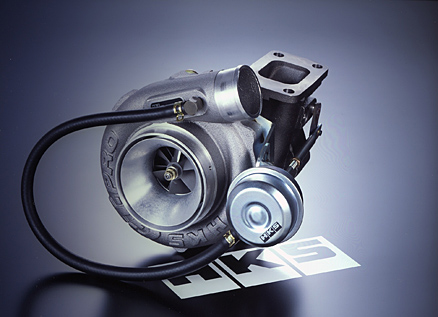
Using an aftermarket turbo or even a custom turbo may in fact be better than the factory options, but they do come at quite a price. They usually are not the cheapest option, not always the strongest option, and may require a lot more revs to hit full boost but they do how ever come with a warranty and are brand new so theres no slop or play in the prop shaft.
Using aftermarket, you certainly can use a larger turbo, much larger in fact. But the bigger the turbo you use the more you sacrifice in drivability. Those of you who read zoom, would know the editor ‘PJ’ recently swapped his old T88 for a more reasonable HKS 3037 turbo on his Silvia. I used to work with ‘PJ’ and was taken for a ride when he first got his silvia with T88. Off boost, it was a massive pig and seriously had nothing until 5000 rpm, when all hell would break loose and you would be sling shot in to the distance.
So the moral to that story is: a reasonably sized turbo will be infinately more driveable than the biggest baddest mutha you can find.
Coupling aftermarket camshafts with a turbo is one of the greatest things that can be done. The sort of cams you should look at are ones with the largest amount of lift, to allow the most and largest volume of air in to make more power: Lift of at least 8mm or bigger is recommended. A large duration cam shaft is not really necessary, so you should limit your turbo cams to about a maximum of 270° degrees.
COOL IT OR YOU’LL BLOW YOUR LOAD
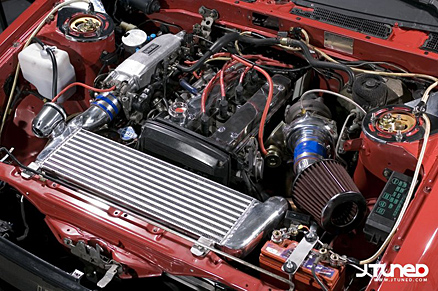
Intercoolers and pressure release: Two small and often vital parts that you really need to get right. An intercooler doesn’t need to be anything fancy. Honestly a cheap chinese cooler will do the job fine on a 4A-GTE. Simply find a medium sized cooler normally used for a Silvia and go with that.
Similarly you could use a cooler from companies such as Hybrid PWR, TRUST, etc if you want something that will last a bit longer or is better overall quality. A simple tube and fin core is all that will ever be needed and remember you get what you pay for. That shiny new EBAY special may be good looking and keep things mega cool but the air may be slowed by being forced through terrible cast marks due to cheaply paid labour.
Water to air intercoolers is something that really hasnt been done in AE86 as of yet, due to the cheap and accessible nature of air to air cooler cores, but would quite possibly work extremely well.
There is a large amount of space in front of the radiator and behind the front bumper, and a box or barrel water to air cooler in that space with short pipes would certainly save space and look very neat and tidy.
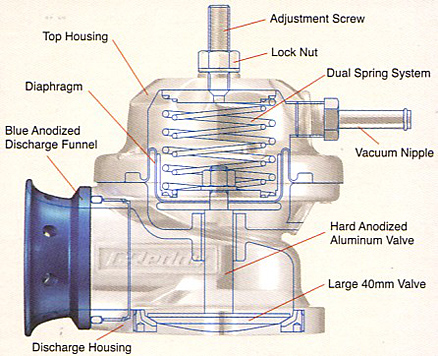
Blow off valves (or BOV) are quite a necessity for almost all modern turbo engines. The blow off valve releases pressure in front of the turbo when the throttle is snapped shut. When this happens the boost pressure has no where else to go but backwards, up against the spinning turbine wheels which can shorten the lift of turbos and in extreme cases can almost stop the blades from turning.
Blow off valves and wastegates come in all shapes and sizes, from the lowly factory plastic ones, to the massive hardcore drag racing pro gates. When buying an aftermarket BOV usually you get a couple of extra springs to match the boost pressure you run. You might have to swap and change the springs to get the BOV in the right setting for you.
BOV’s can also have a number of different releases, such as plumb back, semi-plumb back and full vent. Plumb back means just that: plumb back. The vented pressure is plumbed back in to the intake pipe work before the throttle body. Semi-plumb back means that the half of the excess pressure is plumb back into the intake pipe and the rest is vented to atmosphere.
Full vent means nothing gets plumbed back. No half arsed-ness here as it dumps all the air straight to the atmosphere. Be aware this is very frowned upon by the constabulary.
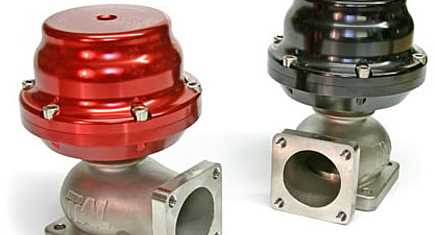
A wastegate, alternatively, can be a lot quieter and you only have two 0ptions to decide on: internal or external. Wastegates contol the maximum boost pressure you will run, by opening at a certain PSI and venting excess exhaust gases or waste gases. Almost all modern turbo cars use a wastegate on the turbo and BOV for pressure controls on the engine.
Internal wastegates are plumbed back into the exhaust system via the dump pipe and exit out the muffler. External gates can be plumbed back into the dump pipe, or as all the cool kids do, dump it straight out!!
These kinds of external gates can be identified by the high pitched wail and spitting of flames from what is widely known as a ‘screamer pipe’. So stand back cos nothing is cooler than a turbo car on full boost with flames shooting out the external gate deafening you as it screams past. Oh and by the way, external gates with ‘screamer pipes’ are also highly illegal on the street, so best keep ’em for the track.
BLOW IT OUT YOUR……
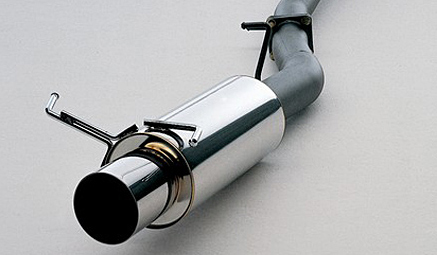
As has been covered before, a decent exhaust system is needed. 3 inches is the norm for almost any turbo car and for a 4A-GTE this is no different. The 3 inch designs are almost overkill but it will flow like nothing else, so go for it!
This is also where an under diff exhaust is pretty much a must, as going over you will run out of room between the diff and body of the car, especially on low cars where ground clearance is an issue. A smooth mandrel-bent, under-diff system with minimal bends is the most efficient style to go with.
BUST UP
Now you got all that sorted, this is the point you really will need to upgrade you diff and gear box. The usual upgrade is W55/57/58 gearbox and a Hilux or F-series diff. The T-50 gearbox and spindly T-series rear end will not cope with turbo power for long, but it all depends on how you drive it too. Just ask Sam….
The specifics of drive train upgrades will be covered in a future installment of ‘the guide’.
BRAINS OF THE OPERATION
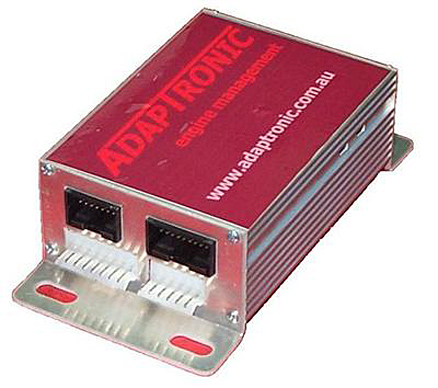
A factory ‘GZE ECU can be tricked into running with a turbo provided you keep boost below 10psi. It will run like this for a while provided the rest of system, IE fuel and cooling, has been upgraded accordingly. Turbo engines really are where the multitude of aftermarket ECU options come to the fore. Haltech, Autronic, EMS, Adaptronic, MoTeC.. All these come with a multitude of features for the turbo engine (and are all designed in Australia – the world’s leaders in fuel management ECU’s!)
All have multiple maps tuning for street and track driving and they all provide models which can control boost and Anti-lag. You might be wondering why you need anti-lag? Well when at the track and you lift off the throttle or are staging at the tree on the strip, anti-lag comes in very handy as it will keep the turbo on boost almost the whole time, significantly reducing spool times! If you’ve ever seen WRC you’ll know what im talking about; that characteristic “bang! bang! bang!” from the exhaust pipe as the cars race past on over-run.
Closed loop idle, closed loop 02 sensor, VVTI control, rev limiting. All these features are play a big part in the tuning of a turbo car. Most ECU’s are also compatible with coil on plug ignition systems and aftermarket ignition and distributor less ignition systems such as MSD and can also have launch control for you drag racers out there. Having seen this in action it works brilliantly when trying to launch hard. Can also scare the bejesus out of pedestrians and that try hard at the lights too….
Again more detail will be covered in a future issue of ‘the guide’.
FUEL SYSTEMS
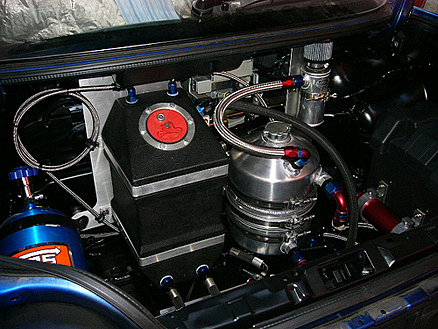
Lastly this brings us to the life blood if every engine, FUEL. The standard AE86 fuel pump be it a 4A-C pump or 4A-GE pump is not going to cut it with a turbo engine. All is not lost however, they can be utilised in the factory location to supply fuel to your N/A or TURBO engine via a surge tank system.
Using the factory fuel pump as a ‘lift pump’ to bring the fuel into a surge tank, a custom fuel system can be built around a main high-flow fuel pump, such as one manufactured by Bosch or Walboro to do the rest of the hard work of feeding your new and very thirsty 4A-GTE baby.
Surge tanks genreally need to be at least 2 liters in volume to keep the fuel supply to front of the car without drying up. The surge tank can be mounted inside the car or underneath the car or completely within the main tank. Being mounted inside the car they should be mounted in the boot area with an electrical cut off switch should you ever have a serious incident. Surge tanks also need to be contained within a sealed box as well to prevent leakage. The down side to mouning it inside the car is the constant fuel smell…
Mounting the surge tank underneath the car you wont get the fuel smell, but underbody space is at a premium on the AE86 and can be difficult to find space to mount a suitibly sized tank. Also mounting underneath the car you will need to protect everything from the elements.
NOW GET TO IT!
So there you have it! All you need to know about turbo setups for the AE86. While initially it maybe a larger cash out lay to do the conversion properly, there are numerous advantages expecially if your drifting your hachi, and the power to weight is amazing!
See you next time for crazy engine conversions!




Pingback: 網頁